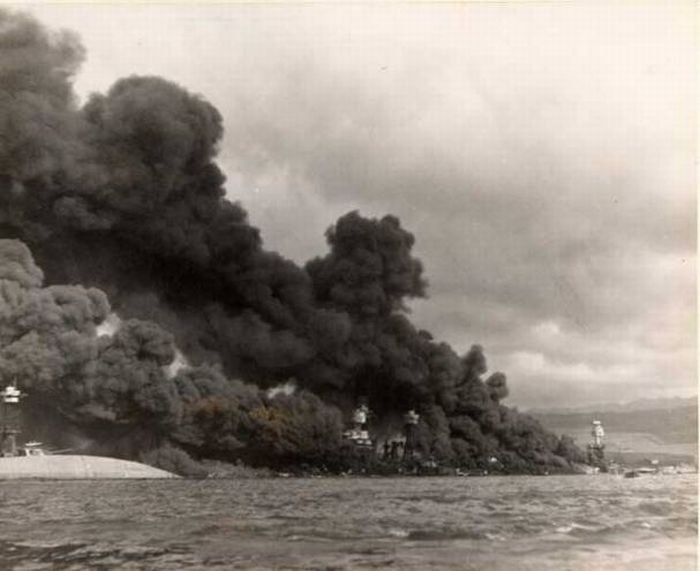|
|
History: Pearl Harbor Bombing
|
In 1940, Japan invaded French Indochina in an effort to control supplies reaching China. The United States halted shipments of airplanes, parts, machine tools, and aviation gasoline, which was perceived by Japan as an unfriendly act. The U.S. did not stop oil exports to Japan at that time in part because prevailing sentiment in Washington was that such an action would be an extreme step, given Japanese dependence on U.S. oil, and likely to be considered a provocation by Japan.
Early in 1941, President Franklin D. Roosevelt moved the Pacific Fleet to Hawaii from its previous base in San Diego and ordered a military buildup in the Philippines in the hope of discouraging Japanese aggression in the Far East. Because the Japanese high command was (mistakenly) certain any attack on the British Southeast Asian colonies would bring the U.S. into the war, a devastating preventive strike appeared to be the only way to avoid U.S. naval interference. An invasion of the Philippines was also considered to be necessary by Japanese war planners. The U.S. War Plan Orange had envisioned defending the Philippines with a 40,000 man elite force. This was opposed by Douglas MacArthur, who felt that he would need a force ten times that size, and was never implemented. By 1941, U.S. planners anticipated abandonment of the Philippines at the outbreak of war and orders to that effect were given in late 1941 to Admiral Thomas Hart, commander of the Asiatic Fleet.
The U.S. ceased oil exports to Japan in July 1941, following Japanese expansion into French Indochina after the fall of France, in part because of new American restrictions on domestic oil consumption. This in turn caused the Japanese to proceed with plans to take the Dutch East Indies, an oil-rich territory.
Preliminary planning for an attack on Pearl Harbor to protect the move into the "Southern Resource Area" (the Japanese term for the Dutch East Indies and Southeast Asia generally) had begun very early in 1941 under the auspices of Admiral Isoroku Yamamoto, then commanding Japan's Combined Fleet. He won assent to formal planning and training for an attack from the Imperial Japanese Navy General Staff only after much contention with Naval Headquarters, including a threat to resign his command. Full-scale planning was underway by early spring 1941, primarily by Captain Minoru Genda. Japanese planning staff studied the 1940 British air attack on the Italian fleet at Taranto intensively. It was of great use to them when planning their attack on U.S. naval forces in Pearl Harbor.
|
|









